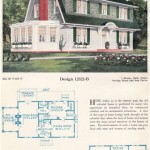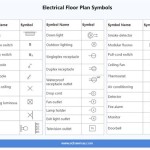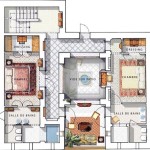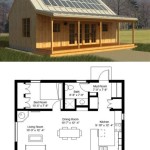How To Draw My Own House Plans For Free
Creating house plans may seem like a daunting task best left to professionals, but with the availability of free resources and software, it is possible for individuals to draft their own basic house plans. This can be particularly useful for conceptualizing design ideas, planning renovations, or simply visualizing potential layouts before committing to more detailed architectural drawings. It is important to acknowledge upfront that plans created for construction or permitting will likely require the stamp of a licensed architect or engineer, depending on local building codes. This article provides a guide on how to approach the process of creating preliminary house plans for personal use, focusing on free tools and practical steps.
Before embarking on the actual drawing process, a solid foundation of understanding is crucial. This involves grasping basic architectural principles, familiarizing oneself with standard drawing conventions, and taking accurate measurements of the existing space, if applicable. The overall goal is to create a functional and aesthetically pleasing design that meets the individual's current and future needs. Careful planning and attention to detail are vital in ensuring a successful outcome, even when using free resources.
Preliminary Planning and Information Gathering
The first step involves gathering all necessary information about the space. For new construction, this means understanding the site's dimensions, orientation, and any relevant zoning regulations. These regulations may dictate setbacks (minimum distances from property lines), height restrictions, and other limitations that will influence the design. For renovations or additions, accurate measurements of the existing structure are paramount. A laser measuring tool can significantly improve accuracy, particularly for larger spaces. Measurements should include room dimensions, wall thicknesses, window and door sizes and locations, and ceiling heights.
In addition to dimensions, consider the functions that each room will serve and the desired flow between spaces. Create a list of needs and wants, prioritizing them based on importance. Think about storage requirements, natural light access, and potential future modifications. This process will help define the overall layout and ensure that the design meets the specific needs of the inhabitants. It is also helpful to collect inspiration from various sources, such as magazines, websites, and existing house plans. This can provide ideas for room arrangements, architectural styles, and specific design elements.
It is important to understand fundamental architectural symbols and conventions used in house plans. These symbols represent common features such as doors, windows, walls, stairs, plumbing fixtures, and electrical outlets. Familiarizing oneself with these symbols allows for accurate and consistent representation of the design. Many online resources and tutorials provide comprehensive guides to architectural symbols and drawing conventions.
Another critical aspect of the preliminary planning phase is determining the scale of the drawing. Common scales for house plans include 1/4 inch = 1 foot or 1/8 inch = 1 foot. The choice of scale depends on the size of the house and the level of detail desired. A larger scale allows for more precise representation, but requires a larger drawing area. It's crucial to select a scale and consistently adhere to it throughout the drawing process.
Utilizing Free Software and Online Tools
Several free software options and online tools are available for creating house plans. While these tools may not offer the same level of sophistication as professional CAD software, they can be sufficient for creating basic plans for personal use. These programs often provide pre-designed templates and libraries of symbols that can be easily incorporated into the design, simplifying the process.
One popular option is floorplanner.com. This online tool allows users to create 2D and 3D floor plans by dragging and dropping walls, doors, windows, and furniture. It offers a free version with limited features, which may be adequate for basic house plan creation. Another option is Planner 5D, which also offers both 2D and 3D design capabilities. It features a user-friendly interface and a wide range of furniture and decor options, making it suitable for visualizing the interior design.
SketchUp Free is a web-based version of the popular 3D modeling software SketchUp. While it has a steeper learning curve than simpler floor planning tools, it offers more advanced modeling capabilities for creating a more realistic representation of the house. It is also beneficial to use grid paper to create a scaled drawing by hand. This can be particularly helpful for initial brainstorming and visualizing different layout options. Using a pencil, ruler, and eraser, one can easily experiment with various configurations before committing to a digital design.
Regardless of the software chosen, it is crucial to follow a systematic approach. Start by drawing the exterior walls, ensuring accurate dimensions and angles. Then, add interior walls, doors, and windows, adhering to the chosen scale and architectural conventions. Next, incorporate fixtures and furniture to visualize the space and assess its functionality. Finally, add dimensions and annotations to clearly communicate the design.
Drafting the Plan and Ensuring Accuracy
Once the software or drawing method is selected, the actual drafting of the house plan begins. This involves translating the preliminary sketches and measurements into a scaled drawing that accurately represents the layout and features of the house. Accuracy is paramount to avoid errors and ensure that the plan is usable for its intended purpose. To ensure accuracy, double-check all measurements and dimensions. Use a ruler or measuring tool to verify that the drawing is to scale. Pay close attention to wall thicknesses, door and window sizes, and the placement of fixtures and furniture.
Consistency in applying architectural symbols and conventions is essential. Use the correct symbols for doors, windows, walls, stairs, plumbing fixtures, and electrical outlets. Maintain a consistent line weight for different elements, such as exterior walls, interior walls, and dimension lines. Properly dimensioning the plan is crucial for communicating the size and location of various features. Dimension lines should be clear and easy to read, indicating the distances between walls, doors, windows, and other key elements. Overall dimensions should also be included to provide a complete picture of the house's size.
Consider the placement of electrical outlets, switches, and lighting fixtures. Plan for adequate lighting in each room and locate outlets in convenient locations. Indicate the positions of smoke detectors, carbon monoxide detectors, and other safety devices. If the house plan includes plumbing fixtures, such as sinks, toilets, and showers, ensure that they are properly located and connected to the plumbing system. Consider the placement of water heaters, drain lines, and vent stacks. Even with free software, you can add notes to the drawings. Describe materials to be used, specify types of windows and doors, and any other information pertinent to the design.
Remember that these plans are for personal use and conceptualization. They are not intended for construction or permitting without the review and approval of a qualified professional. Engaging a licensed architect or engineer is crucial before proceeding with any actual construction or renovation work. They can review the plans, ensure compliance with building codes, and provide guidance on structural and mechanical aspects of the design. Professional review is essential for safety and to avoid potential problems during construction.

Home Design Your House

My Own House Design Model Free 3d Floor Plans By Planner 5d

20 Best Floor Plan To Create Your Plans Foyr

20 Best Floor Plan To Create Your Plans Foyr

Small House Plans Popular Designs Layouts

Free Residential Home Floor Plans Evstudio

Small House Plans Popular Designs Layouts

Free Open Source Granny Flat House Plans Project Small

Residential House Plan Drawing Campabati1988 S Ownd

35x41 East Facing House Design Free Cad File Plan And Designs Books








